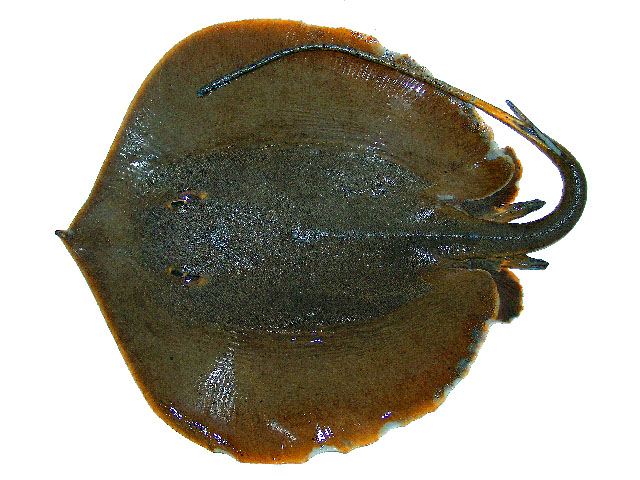| Dasyatidae (Stingrays), subfamily: Urogymninae |
| 26.8 cm WD (male/unsexed); 28.5 cm WD (female) |
|
demersal; freshwater |
| Asia: Thailand and Borneo. |
|
This freshwater stingray has a distinct coloration, dorsal disc with pale margin and pale spots in front of the eye and on the posterior rim of the spiracle; a narrow, dusky, gray or brownish-orange (not black) marginal band (but for the one-fourth of the disc nearest to the snout) on the ventral disc surface. Denticulation on the central area of dorsal disc surface and tail are well developed; possess a series of enlarged denticles, some with projecting posterior margins raised above the surface, on dorsal midline between pearl organ and base of sting, the largest on the tail base (Ref. 59378). |
| Occurs in the mainstream of the Maekhlong River, in an area above the limit of tidal influence. Prefers sandy or sandy-muddy bottom (Ref. 59378). |
|
Endangered (EN); Date assessed: 22 January 2021 (A2cd) Ref. (130435)
|
| harmless |
Source and more info: www.fishbase.org. For personal, classroom, and other internal use only. Not for publication.
